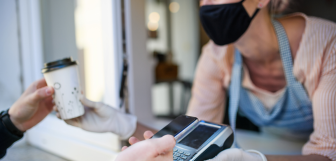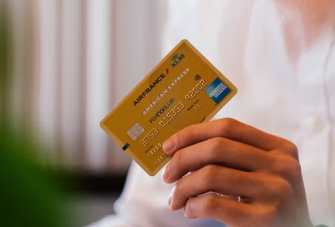10 Different Types Of Mobile Payments
According to the World Payments Report by Capgemini, digital payments have soared by 53% in 2020 from previous years [1]. Evidently, consumers want more digital payment options.
Mobile payments are any type of payment made from a mobile device. This could be a smartphone, smartwatch, or tablet. There are a lot of options these days, with many available that consumers may not be aware of.
Let’s dive into the different types of mobile payments.
Mobile wallets and contactless mobile payments
There are the main platforms that support payments between a smart device and a point of sale (POS) system.
Mobile Wallets
A mobile wallet is exactly as you’d expect - it stores card information and allows people to pay without having their bank card present. Card information can be stored on the mobile device, which will be transmitted to point of sale devices when a payment is being made. These mobile devices can also store other kinds of card information, like information for loyalty cards, transport cards, boarding passes, and more.
Mobile wallets can be used for contactless payments, they usually require a verification process like PIN entry or fingerprint scanning. They can also be used for online payments, which also require verification. Mobile wallets are very secure due to complex encryption and tokenization processes that occur during the payment, yet these types of payments are extremely user-friendly and convenient.
Apple Pay, Google Pay, and Samsung Pay are popular mobile wallet platforms.
NFC
NFC stands for near-field communication. Digital wallets and soundwave payments, which we’ll cover soon, use NFC. It’s a similar concept to Bluetooth, however, NFC has a shorter range and is much more secure as it offers a private connection between the phone and the NFC-enabled payment terminal. NFC connects by using close-range radio frequency identification, which is why it’s deemed ‘contactless’ since the mobile device doesn’t actually have to touch the terminal.
NFC works by reading encrypted data, like card or bank details, and processing them almost immediately. It’s much faster than traditional chip and pin technology.
It’s viewed as being a lot safer than normal card payments for a few reasons:
- Users have to be in very close proximity. NFC has a transmission zone of a few inches, meaning thieves would need to be right beside the terminal in order to intercept the transaction.
- It requires user initiation. The person paying must initiate the transaction between their device and the NFC-enabled terminal usually by entering a PIN code, scanning their fingerprint, or using facial recognition. NFC also must be turned on in the device’s settings [2].
Soundwave payments
Soundwave payments use high-frequency, wireless communication technology to connect the device to the POS. Soundwave technology works using a software element, like an app, meaning that it can be integrated into existing hardware, making it extremely cost-effective for merchants [3].
Using the merchant’s app, customers can click a payment icon, which sends an invitation to the terminal to accept the payment. Soundwave payments use the phone’s speaker and microphone as the medium to communicate with the POS to make payments. The sound waves sent to the customer’s device translate the information needed to authorize and finalize the transfer. Sound waves-based technologies are made to easily interface with mobile wallets, POS terminals, and banking apps which eliminates the need for other hardware utilities. The transaction is completed within a couple of seconds.
- Soundwave payments are compatible with smartphones, card swipe machines, and point of sale terminals
- They use NFC to connect
- No dependency on any specific terminal or device
In-store payments
QR codes
Quick response codes, or QR codes, have a number of uses, including directing users to a URL where they can securely pay. They’re black and white boxes with a coded pattern. This pattern stores data that a phone pattern can pick up, read and translate.
Not all mobile phones can detect QR codes automatically. Apple phones have a section separate to their normal camera that enables QR reading and some other devices require an app to use QR codes. Many merchants will include QR code payment options at the cash register, so customers can simply scan and pay using a mobile device if they don’t have cash or card.
QR payments are made through either the mobile wallet or a mobile banking app. Since the user’s card details are already saved within the phone, there’s an added layer of safety since they aren’t being asked to manually enter their card details.
Another popular use of QR codes in the hospitality industry is Order & Pay platforms. Here, customers can scan a barcode, usually placed tableside or outside of the restaurant, place their order online, and pay securely using their phone. This allows for a contactless dining experience, which is extremely convenient for both the business and the customer since it speeds up service times and simplifies the ordering and payment process.
Portable payment terminals and MST payments
Magnetic Secure Transmission (MST) use electromagnetic technology to send card payment details to the magnetic stripe reader, installed in most payment terminals. This payment method offers a flexible solution to merchants since they don’t require a traditional point of sale. They can work using a magnetic stripe reader alone, for example with a portable card reader.
Portable terminals are an extremely useful add-on to a traditional point of sale system in high-volume sales environments. These usually work using WiFi, so employees can travel around the shop floor and take payments without having to redirect customers to the till. This can improve the customer experience and reduce time spent waiting at the checkout.
Portable terminals also use cloud-based technology, meaning that the data and transactional information that they collect is automatically sent to the main POS system, so all end-of-day data is recorded in sync.
Internet payments
There are four main types of internet payments: third-party payment processors, pay-by-link, in-app payments, and traditional internet browser payments. These all work in a very similar way and require the same user verification.
Third-party payment platforms
There are a number of payment apps to choose from. Some popular examples include PayPal, Venmo, Stripe, or Revolut. These platforms all have a dedicated app and let users create an account that they can connect to their bank account(s), so they can be accessed anywhere that you can log into your account. Third-party payment platforms act as payment processors between the bank and the recipient, so there is an additional barrier for fraudsters to navigate, making these platforms very secure and reliable.
Internet browser and in-app purchases
For internet-based payments, customers simply navigate to the checkout of the ecommerce website they’d like to send payment to via whatever browser they use to access the internet on their phone. Or, if the merchant has their own app, users navigate to the checkout there.
Then, they can choose between manually entering their card details, using the card details they already have stored in their mobile wallet, or using a third-party payment platform like PayPal. It’s best to do this with a private internet connection, like 4G/5G or your own home WiFi. Using public WiFi can leave users more vulnerable to hackers.
Payment links
Payment links are very similar to the above internet payments and QR codes. Here, customers are sent a link, inviting them to pay. Sometimes the link shows a specific amount relevant to their purchase, other times it’s just a link that includes the merchant’s bank details and allows the customer to customize the payment amount. These links might expire after a certain amount of time, but not in all cases. Third-party payment apps can support this for payments between friends and family, not just to businesses.
Usually, this link will arrive through an email or text message. Users will open the link, enter their details. These payments usually already have a set message to make checking bank statements easier.
Streamline payment collection with Epos Now
Simplify the payment process by offering a payment solution that suits the needs of your customer and business. Arrange a free callback with Epos Now to find out more about our multi-award-winning point of sale software. Create the perfect software package, complete with integrations with your favorite business apps for a totally personalized and tailored experience.
- 100s of apps to choose from, including marketing, bookkeeping, and accounting apps
- Get detailed sales performance reports based on specific items, or by time
- Advanced inventory management that syncs your brick and mortar sales with ecommerce sales
- Try the Complete Solution bundle for dedicated hardware to match your software, with a state-of-the-art terminal, cash drawer, receipt printer, and training.
- Integrate Epos Now Order & Pay for a contactless dining experience, custom QR codes for your business, and payment processing in one.




